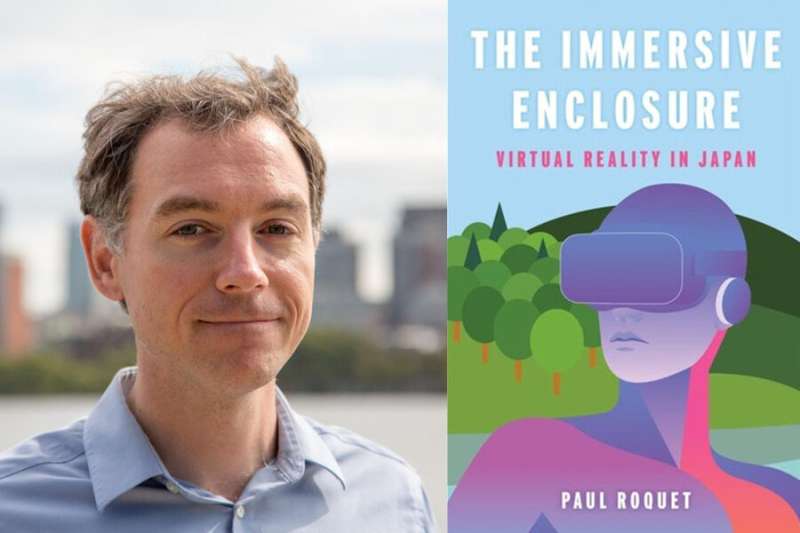
What is virtual truth? On a complex level, it is a headset-enabled system working with photographs and seems to make the person truly feel as if they are in a further location completely. But in phrases of the content and essence of digital reality—well, that might rely on in which you are.
In the U.S., for instance, digital fact (VR) has its deep roots as a form of navy training know-how. Later on it took on a “techno-utopian” air when it started out having a lot more focus in the 1980s and 1990s, as MIT Professor Paul Roquet observes in a new ebook about the issue. But in Japan, virtual truth has grow to be closely oriented close to “isekai,” or “other entire world” fantasies, which includes eventualities in which the VR person enters a portal to yet another earth and will have to locate their way again.
“Element of my objective, in pulling out these various senses of digital reality, is that it can signify unique matters in distinct parts of the earth, and is altering a good deal in excess of time,” suggests Roquet, an associate professor of media research and Japan experiments in MIT’s Comparative Media Reports/Writing software.
As this kind of, VR constitutes a useful case study in the interactions of modern society and technological know-how, and the way improvements can evolve in relation to the cultures that undertake them. Roquet particulars these variances in the new book, “The Immersive Enclosure: Virtual reality in Japan,” posted this 7 days by Columbia University Press.
Distinctive lineages
As Roquet notes in the ebook, digital reality has a prolonged lineage of precursor improvements, courting at least to early 20th-century military services flight simulators. A 1960s stereoscopic arcade equipment, the Sensorama, is regarded as the 1st professional VR product. Later on in the decade, Ivan Sutherland, a personal computer scientist with an MIT Ph.D., made a pioneering computerized head-mounted exhibit.
By the 1980s in the U.S., nevertheless, virtual actuality, generally connected with technologist Jaron Lanier, had veered off in a various direction, staying solid as a liberatory tool, “far more pure than what came in advance of,” as Roquet puts it. He adds: “It goes again to the Platonic ideal of the planet that can be separated from every day materiality. And in the preferred creativity, VR gets this room in which we can repair things like sexism, racism, discrimination, and inequality. There’s a great deal of promises currently being manufactured in the U.S. context.”
In Japan, while, VR has a distinctive trajectory. Partly since Japan’s postwar structure prohibited most navy pursuits, digital fact developed a lot more in relation to types of well known entertainment these as manga, anime, and movie games. Roquet believes its Japanese technological lineage also involves the Sony Walkman, which designed private room for media consumption.
“It is really going in unique instructions,” Roquet says. “The technologies moves absent from the variety of armed service and industrial works by using promised in the U.S.”
As Roquet aspects in the e-book, distinctive Japanese phrases for virtual reality reflect this. One phrase, “bacharu riariti,” reflects the far more idealistic idea that a digital space could functionally substitute for a serious one an additional, “kaso genjitsu,” situates digital truth extra as amusement where by the “emotion matters as much as engineering by itself.”
The genuine material of VR amusement can differ, from multiplayer struggle games to other varieties of fantasy-world routines. As Roquet examines in the e book, Japanese digital reality also has a unique gender profile: One particular study in Japan showed that 87 per cent of social digital truth end users were being male, but 88 per cent of them have been embodying woman direct characters, and not always in eventualities that are empowering to females. Gentlemen are thus “almost everywhere in regulate but nowhere to be noticed,” Roquet writes, whilst “covertly reinscribing gender norms.”
A rather various prospective application for virtual actuality is telework. As Roquet also facts, sizeable exploration has been applied to the idea of using VR to control robots for use in several options, from well being treatment to industrial responsibilities. This is anything Japanese technologists share with, say, Mark Zuckerberg of Meta, whose organization has turn out to be the top U.S. backer of digital fact.
“It’s not so much that there is certainly an absolute divide [between the U.S. and Japan],” Roquet claims instead, he notes, there is a unique emphasis in phrases of “what virtual actuality is about.”
What escapism simply cannot escape
Other scholars have praised “The Immersive Enclosure.” Yuriko Furuhata, an affiliate professor at McGill College, has referred to as the ebook “a refreshing new consider on VR as a client technological innovation.” James J. Hodge, an associate professor at Northwestern University, has termed the guide “a have to-go through for students in media scientific studies and standard visitors alike fascinated by the flawed revolutionary prospective of VR.”
Finally, as Roquet concludes as the stop of the e book, virtual truth still faces key political, industrial, and social queries. A person of them, he writes, is “how to visualize a VR potential ruled by anything other than a tiny established of corporate landlords and the similar previous geopolitical struggles.” One more, as the book notes, is “what it implies for a media interface to assert management around someone’s spatial awareness.”
In both issues, that implies understanding digital reality—and engineering broadly—as it gets shaped by modern society. Digital actuality may possibly frequently present itself as a sort of escapism, but there is no escaping the situation in which it has been created and refined.
“You can build a house that is outside the house of the social earth, but it finishes up remaining highly formed by whoever is performing the creation,” Roquet says.
This story is republished courtesy of MIT Information (internet.mit.edu/newsoffice/), a preferred web site that addresses information about MIT investigate, innovation and educating.
Quotation:
Guide traces the different trajectories of digital fact in the US and Japan (2022, May well 26)
retrieved 9 June 2022
from https://techxplore.com/information/2022-05-trajectories-virtual-fact-japan.html
This document is matter to copyright. Apart from any honest working for the reason of private study or analysis, no
section may well be reproduced with out the prepared authorization. The articles is furnished for information purposes only.



